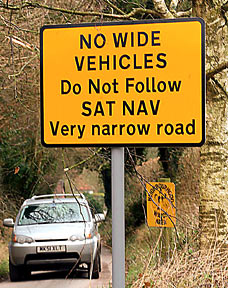27 February 2007
Windows Vista teething problems
Ed Bott reports that his Vista installation switched to a 72 hour countdown to a "reduced functionality mode" because he installed a game Vista WGA problems confirmed | Ed Bott's Microsoft Report | ZDNet.com. Scary stuff.
24 February 2007
Blog Migration
This blog has been migrated to a new host, running an updated version of Movable Type. If there are any problems you spot let me know. Thanks.
23 February 2007
Web Pipes
Tim O'Reilly in this article O'Reilly Radar > Early History of the Web Pipes Concept credits Jon Udell (and Andrew Schulman) with versions of the original concept of describing the use of a web URL as an interface, and the ease with which you can then build services that interlink these individual components, as analogous to the Unix concept of piping the output of one program/script into another.
certainly I picked up on the idea from the various columns written by Jon Udell in BYTE and on other on-line publications the 1990s. It is topical now because Yahoo! have launched a service that highlights the metaphor: Yahoo! Pipes (an RSS remixer). I also learned about RSS from Jon Udell in the late 1990s and implemented RSS content aggregation on a service we launched in the South east of Ireland called ConnectKey (a portal site for local businesses that was bit ahead of its time).
SatNav causes chaos

An article from The Mail On Sunday quoted a resident of Exton (a small town in England), Brian Thorpe-Tracey as saying:
About two years ago we noticed a real increase in drivers using the lane. Vehicles are getting stuck and having to reverse back up, damaging the wall and fence. There's even a piece of metal embedded 12ft up in a tree which looks like it's come off a lorry. When I've asked drivers why they are using the lane they say they are just following satnav.
Thanks to Brady Forest of O'Reilly Radar for the link. This highlights one of the unforeseen problems with new technologies. Brady suggests in his post that allowing user generated updates to be integrated into the data used by satnav systems could alleviate the problem.
Virtual Machines for Dynamic Languages
the post on Ars Technica .NET and Java to get better dynamic language support neatly summarises the activities in creating virtual machines (VM) for dynamic languages. They fall into three categories:
- Extend .NET to support dynamic languages;
- Extend the JVM to support dynamic languages;
- Build a new VM focused on dynamic languages - leading here is Parrot, an open source VM linked to the Perl 6 community.
21 February 2007
Connective Knowledge
I came across this interesting article the other day: An Introduction to Connective Knowledge ~ Stephen's Web ~ by Stephen Downes.
It argues that the web has allowed a new way of creating a shared knowledge based on connectivity, and it places this argument within the philosophical debate around meaning.
All very relevant to the semantic web, and an interesting forthright contribution.
How I found the article was interesting in itself. I noticed that John Breslin of DERI was publishing his slide shows on an new slide show sharing service. I browsed the other side shows in this service and found one by Stephen Downes. I liked it, and I then searched for more material by him.... That's the kind of path we can follow these days to locate interesting materials.